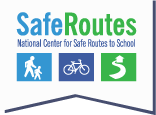Toolbox
This toolbox brings together practical tools, strategies, and real-world examples to help you make it safer and easier for students to walk, bike, and roll to school. Whether you’re just getting started or looking to strengthen existing efforts, these resources are here to support schools and communities in creating safer, healthier, and more connected places for all students.
Leading Bike Buses
Bike Buses are a fun and safe way for groups of students to ride their bikes to school together with an adult leader.
- Bike Buses: Let’s Bike to School Together
This guide includes step-by-step tips, examples, and planning tools to help families, schools, and communities start their own bike bus and make biking to school more doable and enjoyable for everyone.
Teaching Young Pedestrians
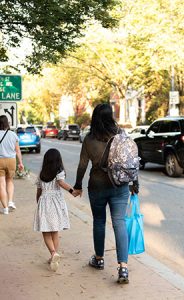
Washington, DC.
No one is born knowing pedestrian safety skills. However, these are skills that are useful throughout life and typically start holding the hand of a responsible adult. As children grow, they are ready for more advanced decision making, such as what’s needed to decide when to cross a street.
Partnering with Youth
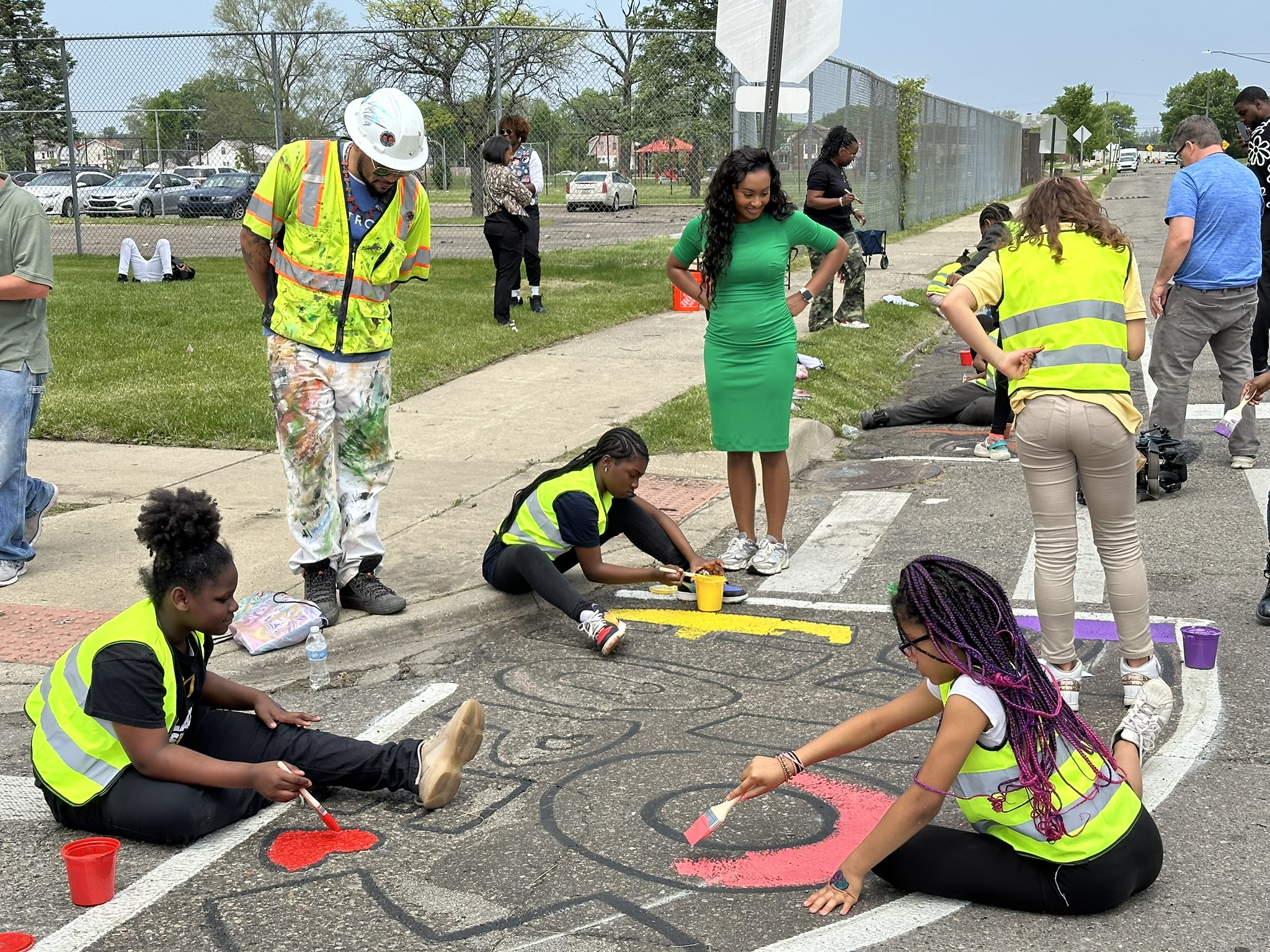
Detroit, MI. Source: City of Detroit
Young people in the United States and across the globe are playing an important role in shaping the future transportation system. They are working with transportation departments, their communities and schools to advocate for policy change, construct quick-build projects, generate community support for slowing traffic, especially around schools, and much more.
- Engaging Youth to Advance Safer Streets for All: Guide
This guide offers a framework for building effective partnerships with young people, based on real-life experiences and interviews with youth-led organizations across the country.
- Engaging Youth to Advance Safer Streets for All: Recommendations
This companion to Engaging Youth to Advance Safer Streets for All: Guide shares real-world tips for addressing common challenges and taking action to build strong, lasting partnerships with youth.
- Youth on Local Government Boards, part of the three-part series “How Local Governments Are Engaging Youth: An Opportunity to Connect with Transportation”
Inviting youth to join local boards is a meaningful way to include their voices in transportation decision-making. This resource shares examples, tips, and lessons from communities that have successfully added youth members to their boards and commissions.
- Engaging Youth in Local Government Road Safety Initiatives, part of the three-part series “How Local Governments Are Engaging Youth: An Opportunity to Connect with Transportation”
This resource shares examples of short-term projects that communities have used to bring fresh ideas, build community connections, and create meaningful partnerships with students.
- Youth Boards that Report to Local Government, part of the three-part series “How Local Governments Are Engaging Youth: An Opportunity to Connect with Transportation”
Creating youth-only boards gives young people a dedicated space to share ideas and advise local leaders on transportation and other issues. This resource shares how communities have set up youth boards that report to local government and offers tips for getting started.
- Across the U.S.: Youth-Led Groups Taking Action for Road Safety and Calling for Change
Slowing down traffic where kids travel makes streets safer for everyone. This info brief explains the benefits of lowering speeds in school zones and other areas where children walk and bike, shares strategies communities can use, and shows how starting with youth-focused areas supports broader Vision Zero goals.
Understanding School Travel Patterns
Identifying places where safety improvements are needed and monitoring for changes in travel modes (like walking and biking) requires collecting and reviewing data.
Using Data to Support Active Travel
Collecting and analyzing school travel data helps communities understand how students get to school, where safety risks exist, and how to support walking and biking. This information can guide decisions, prioritize improvements, and help ensure efforts match the specific needs of students.
- School Travel Data: Innovative Collection Methods and Uses
Understanding how students travel to school helps communities plan safer routes. This info brief shares four examples of how school travel data can be collected in different ways, at different costs, and by agencies of any size.
- What Makes a “Biking” School? How Some Schools Have Pulled Ahead in Cycling Rates
Biking to school is more likely when schools and communities create the right conditions to support it. This info brief looks at schools in Santa Clara County, California, to understand what leads to higher biking rates. It highlights practical ways teachers, administrators, Safe Routes to School coordinators, and community leaders can help more students bike to school.
Looking at Trends in School Travel Over Time
Understanding how school travel has changed over time can help shape better policies, programs, and infrastructure. These resources offer insights into how student travel patterns have shifted, what has influenced those changes, how strategies have evolved, and the impact of Safe Routes to School programs. Together, they offer useful insights for planning and improving programs today.
Changing Infrastructure
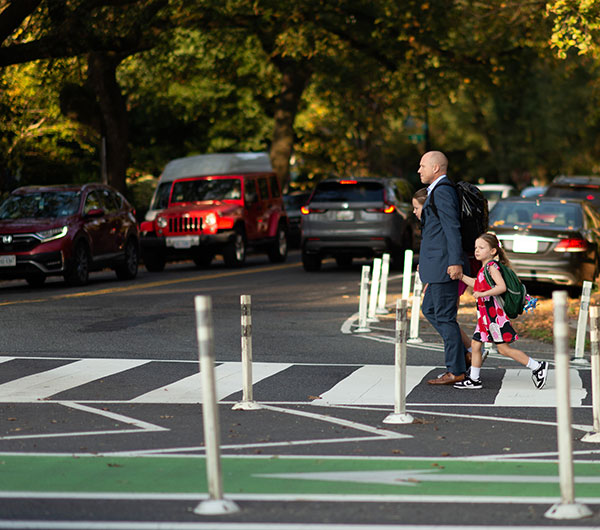
Washington, DC
The built environment plays a big role in safety for people walking and biking. Careful consideration is needed to identify high-risk locations and prioritize improvements in a youth-centered way.
Improving School Zone Safety
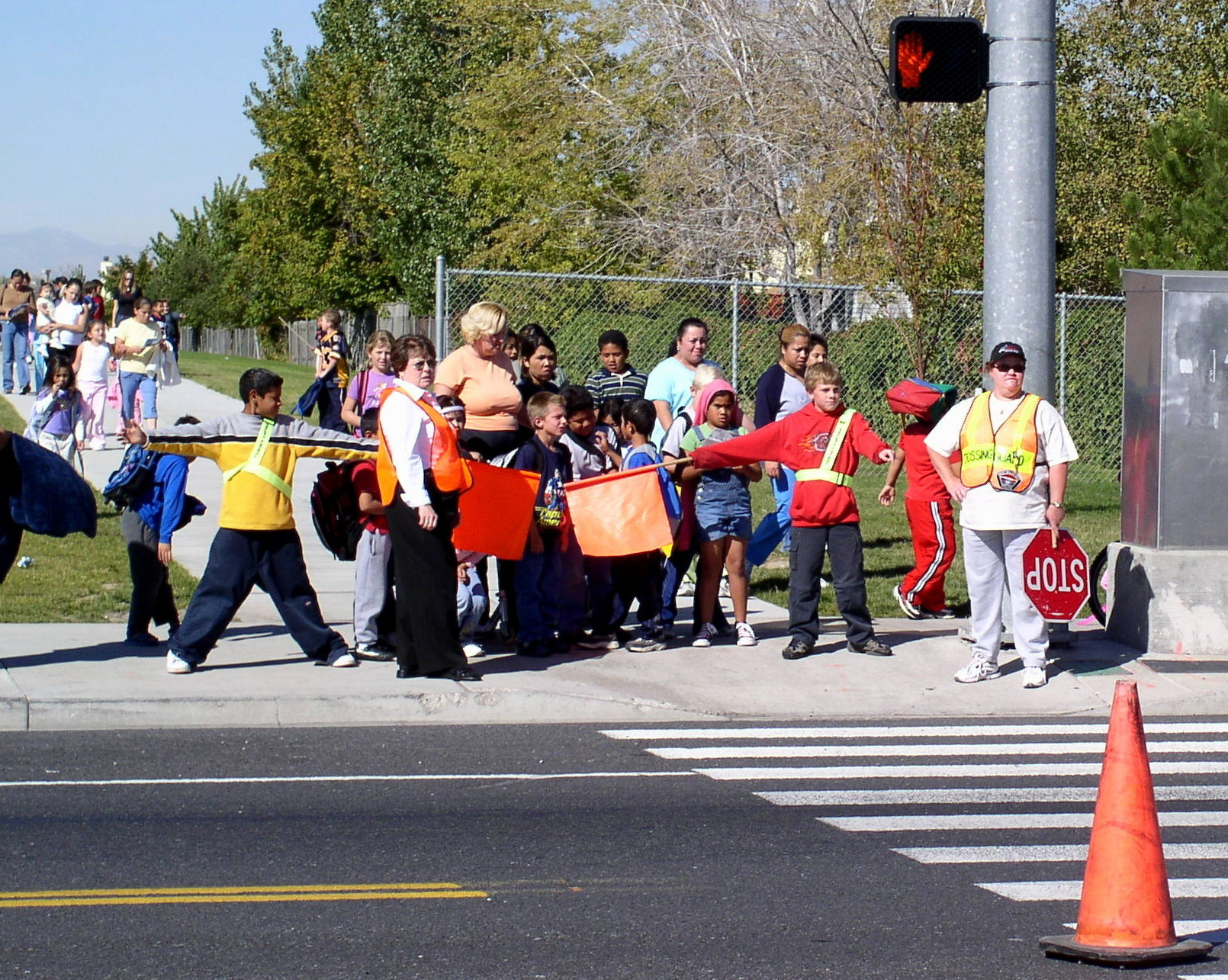
West Valley City, UT. Source: Mike Cynecki
School zones, typically spanning the length of school property, are convergence points where people walking, biking, riding a bus and traveling by private vehicle all converge. It’s an opportunity to create a culture for safety and support students arriving on-time and ready to learn.
- Adult School Crossing Guard Guide
Adult school crossing guards play a key role in keeping kids safe during their trip to school. This guide gives an overview of federal standards and recommendations for crossing guard programs and shares examples of how different states and communities put these practices into action.
- Re-envisioning School Streets: Creating More Space for Children and Families
Making more space around schools can help children and families travel more safely and comfortably. This info brief shares ways communities have changed streets near schools to support walking and biking. It includes examples, tips for choosing what works in different settings, and short case studies from schools across the country.
Planning for Automated Driving
Bordering streets and school campuses have unique characteristics that need to be integrated into the development of fully automated driving systems.
Getting to the School Bus
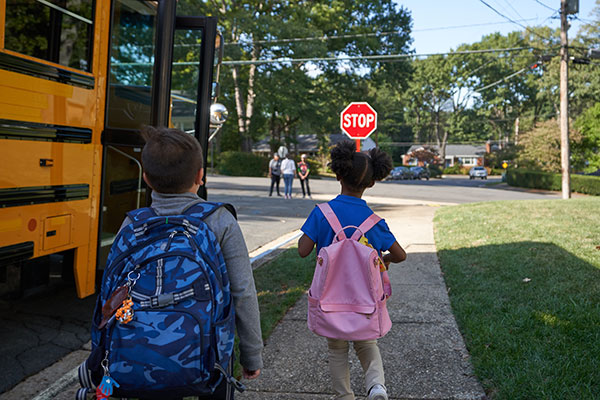
Source: NHTSA Image Library
School bus riders and their families are also pedestrians as they walk to and from bus stops and wait for the bus.
- Selecting School Bus Stop Locations
Bus stop locations matter because they affect how students get to the stop and how safe they are while waiting. This resource gives school transportation staff and administrators guidance on choosing safe bus stop locations and supporting safe walking routes for students.
- Safe Steps to the School Bus Stop: How Parents Can Encourage Safe Walking
This resource builds on Teaching Children to Walk Safely as They Grow and Develop and offers caregivers additional tips for teaching safe walking skills to and from the school bus.
Supporting Students with Disabilities
Students with disabilities may face physical, sensory, cognitive, or social barriers when walking, biking, or rolling to school. Thoughtful planning, strong partnerships, and meaningful student involvement can help make travel safer, more inclusive, and more empowering for all students.
Building on the Federal SRTS Program
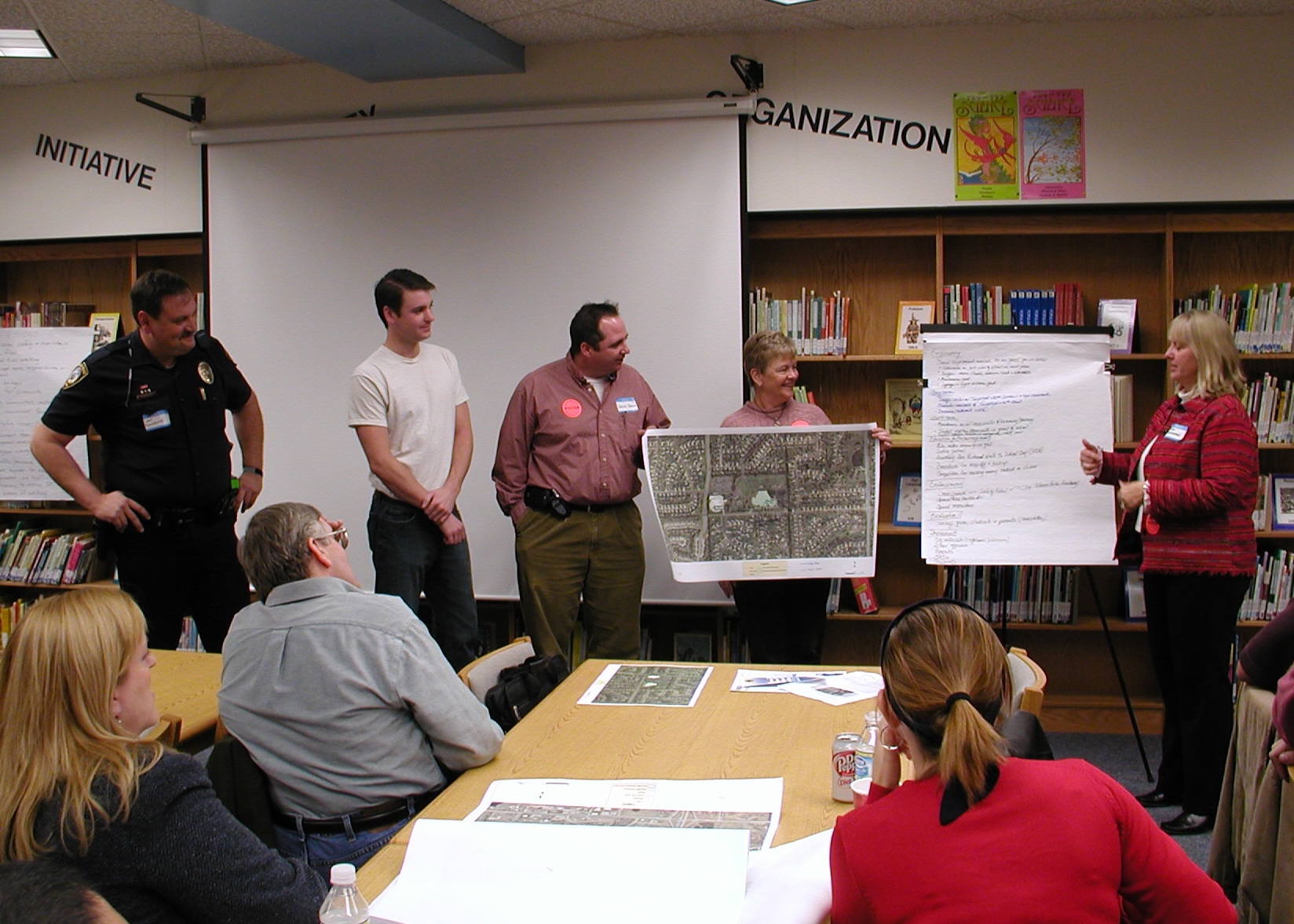
Safe Routes to School National Course in Lenexa, KS. Source: Mike Cynecki
The Federal Safe Routes to School program began with inclusion in 2005 Federal Transportation Law. From 2006 – 2016, the National Center for Safe Routes to School served as Federal Highway Administration’s Clearinghouse for the Safe Routes to School Program. In its role providing technical assistance, marketing, student travel data collection to State and local SRTS programs, it developed three seminal reports that both served to monitor the Federal program’s progress and point towards important opportunities for expansion.
